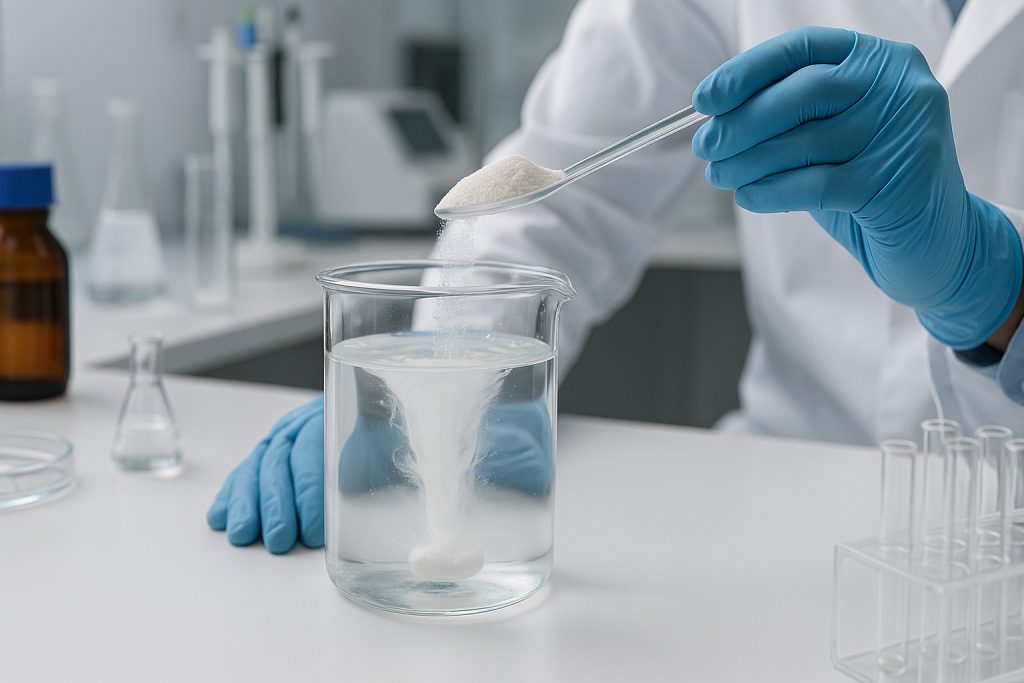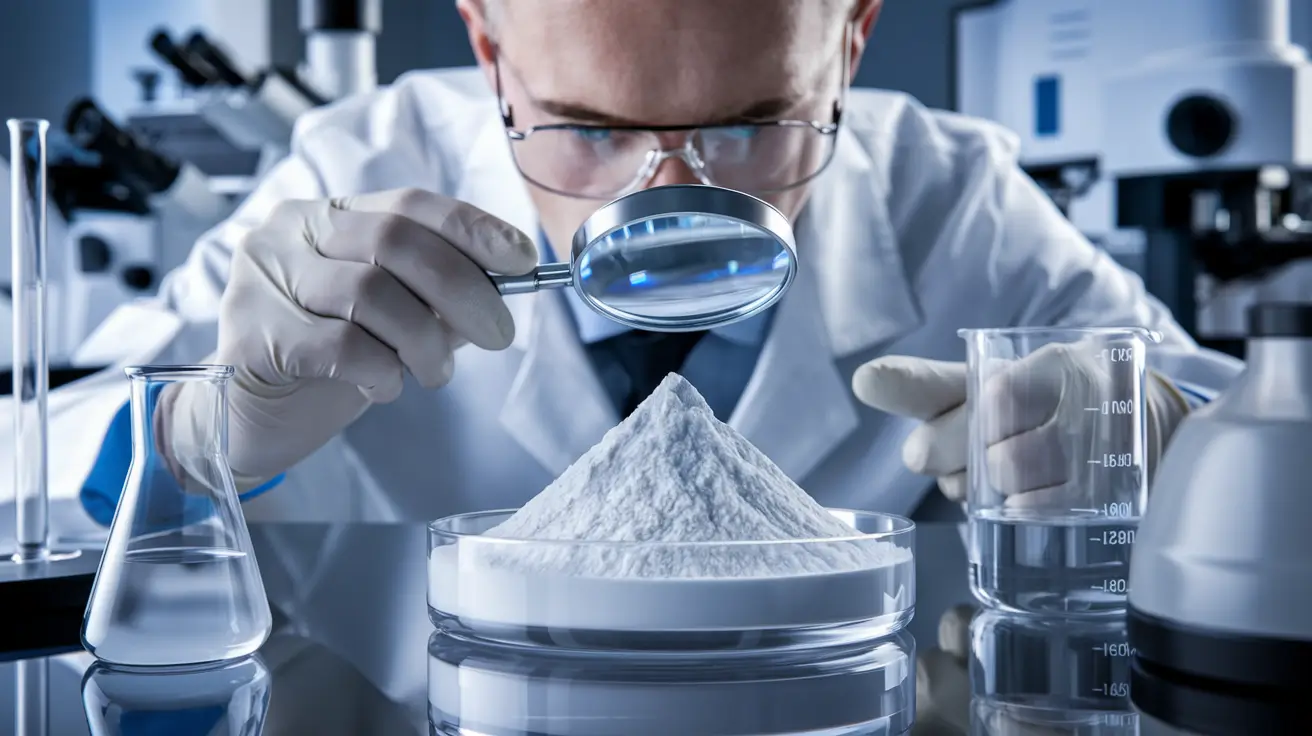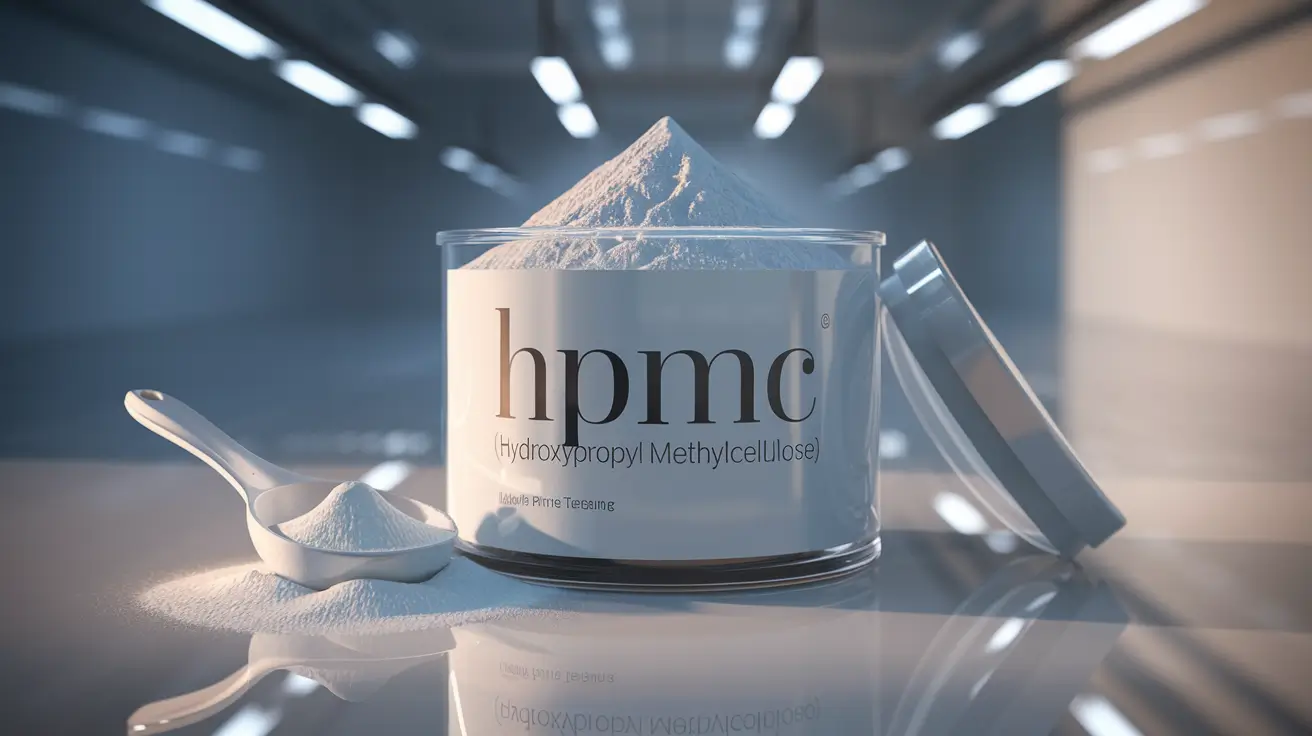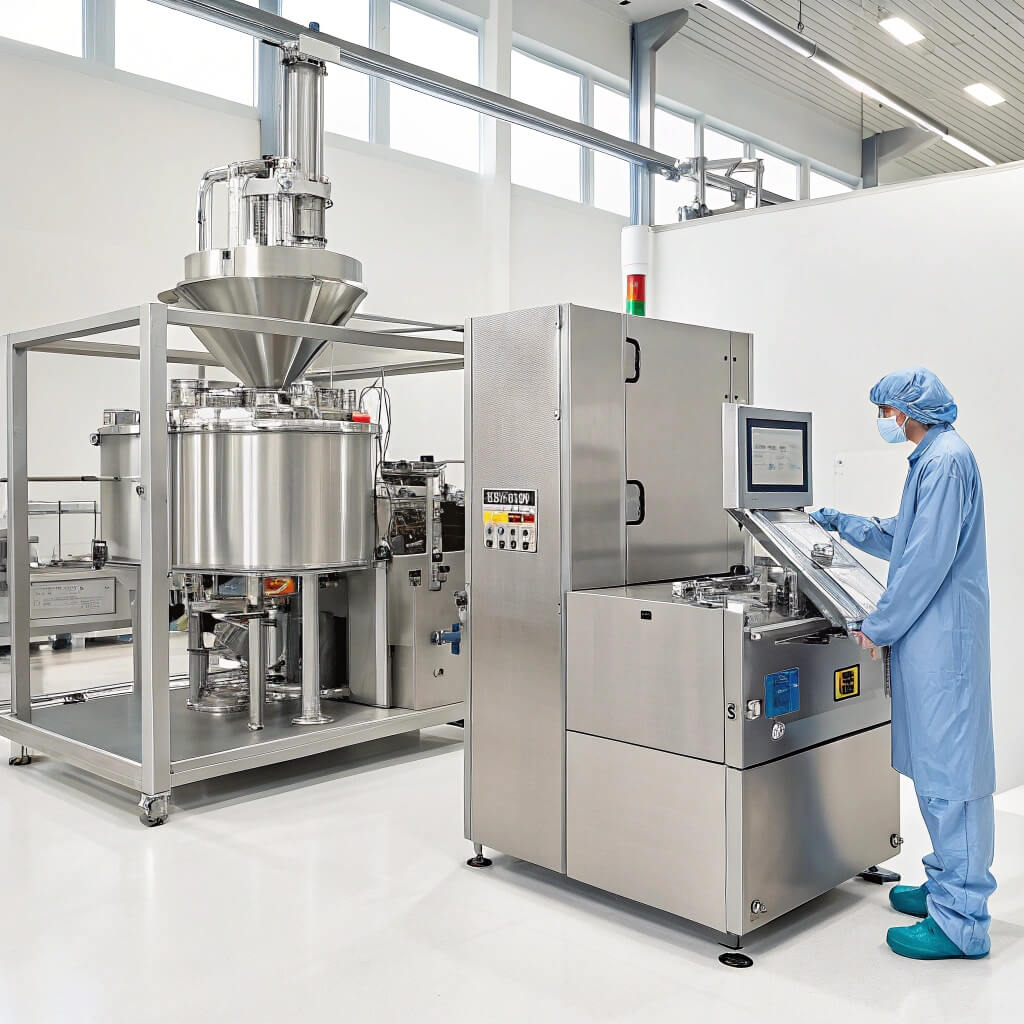China has emerged as the dominant force in the global Hydroxypropyl Methylcellulose (HPMC) manufacturing landscape. For purchasing managers and technical decision-makers in construction, pharmaceuticals, and consumer goods, finding reliable HPMC suppliers with consistent quality and competitive pricing presents significant challenges. This article examines how Chinese manufacturers have revolutionized HPMC production through technological innovation, quality control systems, and cost efficiencies. Based on industry analysis and manufacturer insights, we’ll guide you through evaluating and selecting the ideal Chinese HPMC partner for your specific application needs.

1. What is HPMC and Why is China Leading its Production?
Hydroxypropyl Methylcellulose (HPMC) is a semi-synthetic, non-ionic cellulose ether derived from cellulose through chemical modification. This versatile polymer possesses unique properties including water solubility, film-forming capabilities, surface activity, and thickening effects. These characteristics make HPMC invaluable across multiple industries, from construction materials and pharmaceuticals to food products and cosmetics.
But here’s what makes it truly special: HPMC can transform ordinary products into high-performance solutions through its remarkable binding, thickening, water retention, and film-forming properties.
China’s rise to dominance in HPMC production represents one of the most significant industrial developments in specialty chemicals over the past two decades. What began as small-scale manufacturing in the 1990s has evolved into a sophisticated industry commanding over 70% of global HPMC production capacity.
| Timeline of China’s HPMC Industry Development |
|---|
| 1990s: Initial small-scale production begins |
| 2000-2005: Rapid capacity expansion for construction grades |
| 2005-2010: Quality improvements and certification advances |
| 2010-2015: Technical innovation and pharmaceutical grade development |
| 2015-Present: Industry consolidation and global market leadership |
Current production statistics reveal the scale of China’s HPMC manufacturing prowess. The country now hosts over 50 major HPMC production facilities with a combined annual capacity exceeding 200,000 metric tons. Leading manufacturers have established production lines capable of 20,000+ metric tons annually, dwarfing many Western competitors.
Several key factors have contributed to China’s remarkable success: strategic raw material advantages, substantial government support through industrial policies, and continuous investment in research and development. Chinese HPMC manufacturers now operate sophisticated R&D centers staffed with polymer scientists and application specialists, enabling the development of tailored HPMC formulations for specific end-use applications.
2. How Do Chinese HPMC Factories Maintain Quality Standards?
Quality control has become the cornerstone of China’s HPMC factory industry, transforming what was once a perception challenge into a competitive advantage. Modern Chinese HPMC manufacturers have implemented comprehensive quality management systems that rival or exceed international standards.
Here’s the surprising reality: Many leading Chinese HPMC factories now maintain stricter internal quality controls than required by international standards, creating a quality buffer that ensures consistent product performance.
The quality journey begins with raw material inspection using sophisticated analytical techniques to verify purity and composition. During manufacturing, in-process quality control checkpoints monitor critical parameters at each production stage. Automated systems continuously track reaction conditions, while trained technicians perform regular sampling and testing.
| Quality Control Parameters in Chinese HPMC Production |
|---|
| Viscosity (mPa·s): 3-200,000 depending on grade |
| Substitution degree: 1.2-2.0 (methoxyl), 0.05-0.3 (hydroxypropyl) |
| Purity: 99.0-99.9% depending on application |
| Heavy metals: <10 ppm for pharmaceutical grades |
| Particle size distribution: Controlled within ±5% of specification |
The international certification landscape for Chinese HPMC factories has evolved dramatically. Nearly all major producers now hold ISO 9001 quality management certification as a baseline standard. Beyond this foundation, application-specific certifications have become increasingly common, including CE marking, GMP certification, FDA DMF registrations, and food safety standards.
Testing methodologies employed by Chinese HPMC factories have grown increasingly sophisticated. Standard physical tests are now supplemented by advanced analytical techniques including NMR spectroscopy, thermogravimetric analysis, and rheological testing to predict performance under application conditions.
When comparing Chinese HPMC quality to other global manufacturers, the gap has narrowed significantly. Leading Chinese manufacturers have achieved quality parity in most applications, and in some cases, Chinese factories with newer equipment actually produce more consistent HPMC than older Western facilities.
3. What Technical Innovations Drive China’s HPMC Factory Growth?
The remarkable expansion of China’s HPMC industry stems from continuous technical innovation that has transformed production processes, product quality, and application capabilities. Chinese manufacturers have moved beyond simply adopting Western technologies to developing proprietary solutions.
What’s truly fascinating is how Chinese HPMC factories have compressed decades of technical evolution into a remarkably short timeframe, leapfrogging traditional development paths through strategic innovation investments.
Recent technological advancements focus on process intensification, purification technology, and automation. Traditional batch processes have been reimagined with semi-continuous systems that maintain product consistency while increasing throughput. Novel filtration systems employing ceramic membranes have replaced older mechanical separation methods, significantly reducing impurity levels while minimizing solvent usage.
| Key Technological Innovations in Chinese HPMC Manufacturing |
|———————————————————–|
| Innovazione | Beneficio | Implementation Status |
|---|---|---|
| Continuous etherification reactors | 30-40% higher throughput | Widely adopted by market leaders |
| Ceramic membrane filtration | 50-70% reduction in impurities | Increasingly common in premium grades |
| Computer-controlled substitution | Precise property customization | Standard in advanced facilities |
| Low-temperature spray drying | Improved particle morphology | Emerging technology for specialty grades |
| Solvent recovery systems | 90%+ recycling rates | Nearly universal in modern plants |
Automation and smart manufacturing implementation represents another frontier where Chinese HPMC factories have made substantial progress. Modern facilities feature integrated control systems that monitor and adjust hundreds of production parameters in real-time, significantly reducing quality variations between batches.
Dovresti sapere che these automation investments have transformed workforce requirements in Chinese HPMC factories. While total employment has remained relatively stable, the skill profile has shifted dramatically toward technical roles in programming, data analysis, and systems integration.
Research and development investments by major Chinese producers have accelerated in recent years. Leading companies now allocate 3-5% of revenue to R&D activities, approaching levels seen at Western specialty chemical firms. The R&D focus extends beyond manufacturing processes to include application-specific product development through collaborative approaches with end-users.
4. How Do Chinese HPMC Factories Address Sustainability Concerns?
Environmental sustainability has become a critical focus for China’s HPMC manufacturing sector, driven by both regulatory requirements and market demands. The industry has undergone a remarkable transformation from its early days of minimal environmental controls to today’s sophisticated sustainability initiatives.
What many buyers don’t realize is that leading Chinese HPMC factories have implemented environmental management systems that often exceed national requirements, positioning them as sustainability leaders within China’s chemical industry.
Environmental impact reduction strategies begin with process optimization. Advanced Chinese producers have redesigned production processes to minimize waste streams through closed-loop systems that recover and reuse process chemicals. Wastewater treatment technologies have evolved substantially, with multi-stage treatment systems now standard in major facilities.
| Environmental Performance Metrics in Chinese HPMC Production |
|———————————————————–|
| Parametro | Industry Average 2010 | Current Leaders | 2025 Targets |
|---|---|---|---|
| Water usage (tons/ton HPMC) | 40-50 | 15-20 | <10 |
| Energy consumption (GJ/ton) | 25-30 | 12-15 | <10 |
| CO₂ emissions (tons/ton) | 3.5-4.0 | 1.8-2.2 | <1.5 |
| Solvent recovery rate (%) | 70-80 | 92-97 | >98 |
| Waste to landfill (kg/ton) | 50-70 | 10-15 | <5 |
Energy efficiency improvements represent another major sustainability focus. Chinese manufacturers have implemented multiple efficiency measures including heat recovery systems, variable frequency drives, advanced insulation materials, and optimized drying technologies. The collective impact has reduced energy consumption per ton of HPMC by approximately 45% over the past decade among leading producers.
You’ll be impressed to know that several top Chinese HPMC factories have begun transitioning to renewable energy sources. Solar installations now provide 5-15% of electricity at multiple production sites, with ambitious expansion plans underway.
Waste management and recycling initiatives have evolved from basic compliance measures to comprehensive resource recovery programs. Modern Chinese HPMC factories implement waste hierarchies that prioritize reduction, reuse, and recycling over disposal, dramatically reducing waste generation rates while creating closed-loop material flows for many process inputs.
5. What Makes Chinese HPMC Products Cost-Competitive?
Cost competitiveness remains one of the most compelling advantages of Chinese HPMC manufacturers in the global market. This pricing advantage stems from a complex interplay of structural factors rather than simply lower labor costs as commonly assumed.
Here’s what industry insiders understand: Chinese HPMC cost advantages derive primarily from manufacturing efficiency, supply chain integration, and scale economies rather than cutting corners on quality or environmental compliance.
A detailed cost structure analysis reveals the true sources of Chinese price competitiveness. Raw material costs typically represent 50-60% of total HPMC production expenses, with Chinese manufacturers benefiting from domestic supply chains for key inputs. Labor costs constitute only 5-8% of total production expenses in modern, automated HPMC facilities, limiting this advantage despite lower rates.
| HPMC Production Cost Structure Comparison |
|——————————————|
| Componente di costo | Chinese Producers (%) | Western Producers (%) | Cost Advantage |
|---|---|---|---|
| Raw materials | 50-60 | 55-65 | 10-15% inferiore |
| Energy | 10-15 | 8-12 | Mixed (rate advantage vs. efficiency) |
| Lavoro | 5-8 | 10-15 | 30-40% lower |
| Overhead | 8-12 | 12-18 | 20-25% inferiore |
| Depreciation | 8-10 | 5-8 | Higher for newer facilities |
| R&D/Technical | 3-5 | 4-6 | Narrowing gap |
Economy of scale advantages in Chinese production facilities provide another significant cost benefit. The average Chinese HPMC plant now produces 15,000-20,000 metric tons annually, compared to typical Western facilities of 5,000-10,000 tons. These larger production volumes spread fixed costs across more units, reducing per-ton expenses.
You should consider how these scale advantages translate directly to pricing flexibility. Leading Chinese manufacturers can profitably serve both large-volume commodity markets and smaller specialty segments, adjusting margins strategically across their product portfolio.
Supply chain efficiencies unique to China’s industrial ecosystem create additional cost advantages. The concentration of HPMC production in industrial clusters facilitates knowledge sharing and specialized support services, reducing transaction costs and improving operational efficiency. Vertical integration represents another cost advantage for leading Chinese producers, capturing margin at multiple value chain stages while reducing coordination costs.
6. How Can Buyers Evaluate and Select Chinese HPMC Suppliers?
Selecting the right Chinese HPMC supplier represents a critical decision for purchasing managers and technical decision-makers. The growing number of manufacturers with varying capabilities requires a structured evaluation approach to identify partners that best match specific application requirements.
What most buyers overlook is that supplier selection should be treated as a strategic process rather than a simple purchasing decision, as the right partnership can deliver value far beyond basic pricing advantages.
Key criteria for assessing Chinese HPMC manufacturers begin with technical capability alignment. Different applications demand specific HPMC properties, making it essential to evaluate whether a supplier’s production technology and expertise match your requirements. Product certification and compliance documentation provide objective verification of manufacturer capabilities.
| Application-Specific Certifications for HPMC |
|———————————————|
| Applicazione | Essential Certifications | Beneficial Additional Certifications |
|---|---|---|
| Costruzione | ISO 9001, CE marking | ASTM compliance, Environmental Product Declaration |
| Farmaceutico | GMP, Pharmacopeia compliance | US FDA DMF, Written Confirmation for EU |
| Cibo | FSSC 22000, Food grade certification | Kosher, Halal, Organic compliance |
| Cura della persona | ISO 22716, REACH registration | EcoCert, Natural product certifications |
| Industriale | ISO 9001, Technical data compliance | Application-specific performance testing |
Manufacturing capability assessment should examine both current production capacity and technological sophistication. Key manufacturing indicators to evaluate include production capacity relative to your volume requirements, equipment age and technology level, quality control infrastructure, batch tracking systems, and production flexibility for custom specifications.
You should always verify a supplier’s quality consistency through sample testing across multiple production batches. This testing should evaluate not just compliance with specifications but also batch-to-batch variation, which often reveals more about manufacturing capability than absolute performance.
The due diligence process extends beyond technical assessment to business stability evaluation. Financial health indicators and reference checks with existing customers provide particularly valuable insights into long-term reliability and performance.
Building long-term relationships with Chinese HPMC suppliers delivers value beyond transactional purchasing. Established partnerships often provide priority production scheduling, early access to innovations, customized grades, technical collaboration, greater flexibility on minimum order quantities, and pricing stability despite market fluctuations.
Conclusione
China’s HPMC factory industry has transformed from a fledgling sector to a global powerhouse through strategic investments in quality, technology, sustainability, and cost efficiency. This evolution has created significant opportunities for B2B buyers seeking reliable, high-performance HPMC products across diverse applications. The combination of rigorous quality management systems, innovative manufacturing technologies, and competitive pricing makes Chinese suppliers increasingly attractive partners for companies worldwide.
As the industry continues to mature, leading Chinese manufacturers are differentiating themselves through specialized product development, enhanced technical support, and sustainable production practices. For purchasing managers and technical decision-makers, this maturation offers unprecedented options to precisely match HPMC specifications with application requirements while managing costs effectively.
We encourage you to reassess your current HPMC sourcing strategy in light of these industry developments. Consider arranging technical consultations with leading Chinese manufacturers to explore how their evolving capabilities might address your specific challenges. The right partnership can deliver benefits extending far beyond basic material supply to include collaborative problem-solving, application optimization, and supply chain reliability.
Sezione FAQ
- Q1: What grades of HPMC are commonly produced in Chinese factories?
Chinese HPMC factories produce a comprehensive range of grades tailored to specific applications. For construction applications, grades with viscosities ranging from 15,000 to 150,000 mPa·s and methoxyl content of 28-30% dominate the market. Pharmaceutical grades feature higher purity levels (99.5%+) with precisely controlled substitution patterns, complying with USP, EP, and JP standards. Food-grade HPMC complies with E464 specifications, featuring low heavy metal content and controlled microbiological profiles. Industrial grades for applications like paint thickening and ceramic processing offer cost-effective performance with varying viscosities and substitution patterns.
- Q2: How do shipping and logistics work when importing HPMC from China?
HPMC shipping from China typically follows established chemical product logistics channels. Standard packaging includes 25kg multi-layer paper bags with polyethylene liners, with bulk options including 500-1000kg flexible intermediate bulk containers. Ocean freight represents the primary shipping method, with typical transit times of 25-35 days to North America and 20-30 days to Europe. Chinese HPMC exporters typically work with established freight forwarders specializing in chemical shipments who handle documentation requirements. Import duties range from 0-6.5% depending on trade agreements, with many manufacturers offering CIF terms that simplify logistics management.
- Q3: What minimum order quantities do Chinese HPMC factories typically require?
Minimum order quantities vary based on supplier size, product grade, and customization requirements. Standard grades from large producers typically have MOQs of 1-5 metric tons, with mid-sized manufacturers often accepting orders as small as 500kg for established products. Specialized or custom grades generally require higher MOQs of 3-10 metric tons, though this requirement often becomes negotiable for long-term supply agreements. Volume pricing tiers create significant incentives for larger orders, with typical price breaks at 5, 10, and 25 metric tons. For smaller volume needs, options include sample quantities, distributor purchasing, or group purchasing arrangements.
- Q4: How stable is the supply chain for Chinese HPMC products?
The Chinese HPMC supply chain has matured significantly over the past decade. Major manufacturers maintain raw material inventories sufficient for 1-3 months of production, buffering against short-term disruptions. Production capacity utilization typically runs at 80-90%, providing flexibility for demand fluctuations. Seasonal factors influence the market, particularly for construction-grade HPMC. Potential disruption risks include environmental regulatory enforcement actions and transportation disruptions, though geographic distribution of production and multiple logistics relationships mitigate these risks. For critical applications, many buyers implement dual-sourcing strategies, qualifying suppliers from different regions of China.
- Q5: What technical support do Chinese HPMC manufacturers provide to international buyers?
Technical support capabilities have evolved into a significant differentiator among Chinese HPMC manufacturers. Leading producers maintain dedicated application laboratories equipped to simulate customer processes and troubleshoot challenges. Technical documentation has improved substantially, with detailed product data sheets and regulatory support documentation in multiple languages. Technical service teams increasingly include internationally experienced professionals providing formulation assistance and troubleshooting support. Digital support channels have expanded rapidly, with video conferencing, webinars, and online technical libraries. For complex projects, collaborative development programs pair customer technical teams with supplier R&D staff to create customized solutions.




